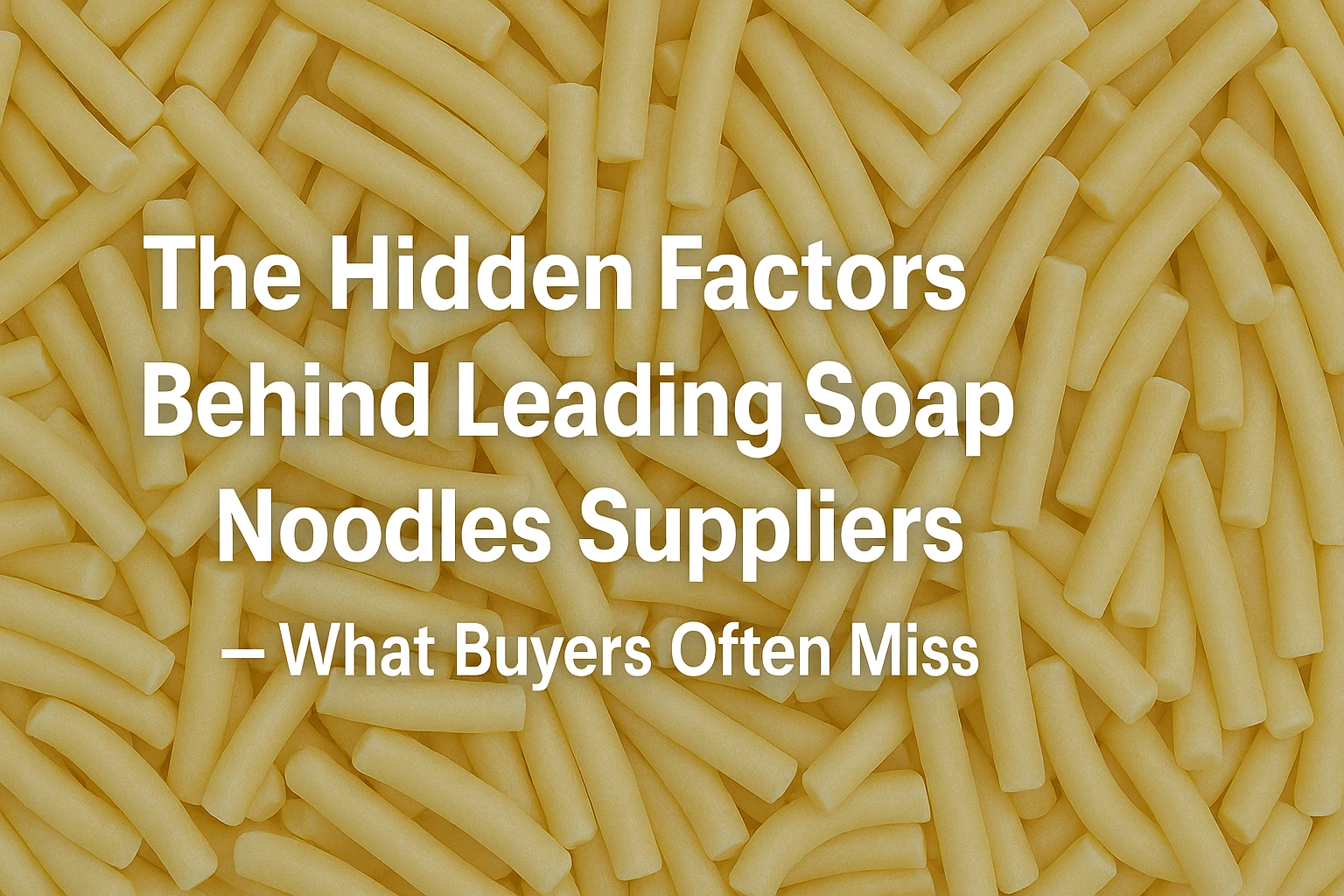1. Introduction: Leading Suppliers Aren’t Always Obvious
While soap noodles might seem like a commodity, the competitive edge in 2025 belongs to suppliers who go beyond bulk selling. Many buyers focus only on price and grade, missing hidden drivers like feedstock security, innovation, regulatory strength, and digital supply intelligence. Global brands like Wilmar International, KLK Oleo, Musim Mas, and IOI Oleo maintain dominance not just by scale but by prioritizing integration, traceability, and sustainability.
2. Feedstock Control, Price Volatility & Risk Management
The most reliable soap noodles suppliers own and control their upstream feedstock—mainly palm oil and tallow—cushioning them from volatility and ensuring supply continuity during global shocks. Integrated majors perform best in turbulent times, using blockchains and digital ledgers to enhance procurement transparency (see Unilever’s collaborations). In contrast, non-integrated or spot-trading suppliers often pass on raw material risk or are slow to adapt to price spikes, exposing buyers to hidden cost surges.
3. Innovation, Sustainability & Customization: The True Differentiators
Modern buyers demand more than basic commodity grades. Leading suppliers win by:
-
Investing in green chemistry and specialty soap noodles (e.g., transparent, high-lather, RSPO-certified, organic blends) to serve premium and green markets.
-
Rapidly adapting to end-user trends like microbiome-friendly surfactants, vegan bars, and cold-process compatibility.
-
Fostering R&D partnerships for co-innovation in specialty personal care and industrial cleaning markets. Mid-tier suppliers differentiate through custom blending, own-labeling, and value-added niche service.
4. Quality Assurance, Compliance, and Certification
Top global and regional suppliers dominate because they deliver repeatable quality, meet evolving compliance (RSPO, ISO, GMP, Halal), and provide full documentation for global export. Digital twins and advanced analytics now enable scenario planning to enhance operational resilience and market-entry. Auditing lab results, reviewing certifications, and third-party monitoring are best practices for buyers facing increased ESG and regulatory scrutiny.
5. Global Supply Chain, Digitalization & Buyer Strategies
The soap noodles market is shaped by regional fragmentation—Southeast Asia for palm-based supply, India and South America for lower-cost or specialty variants. New tariffs, trade policy, localized surges (from biofuel demand), and digital procurement are realigning distribution. Buyers now blend long-term contracts with spot-market agility, leveraging supplier tech capabilities for rapid logistics and scenario-based risk management.
6. Conclusion: Rethink Your Soap Noodles Supplier Choice
The best soap noodles suppliers aren’t the cheapest—they offer the greatest value through feedstock resilience, adaptive innovation, and rigorous compliance. In 2025, buyers that prioritize these hidden factors will ensure better quality, lower total cost, and future-proofed supply security.

Leave a Comment